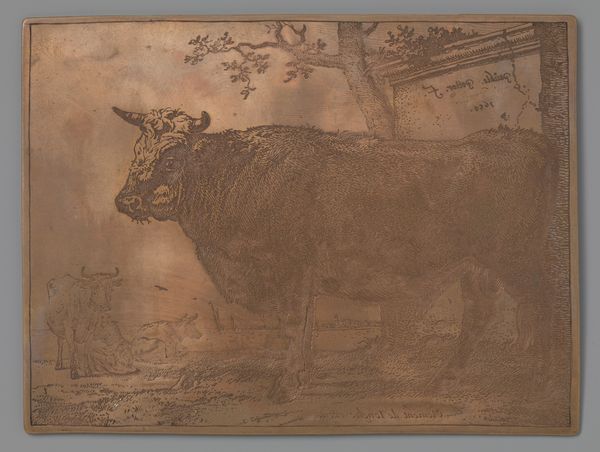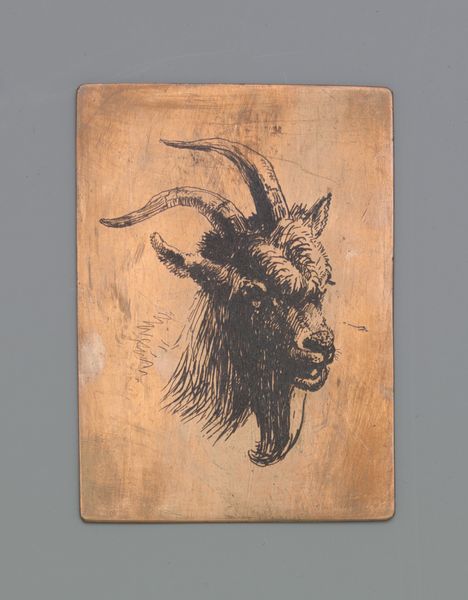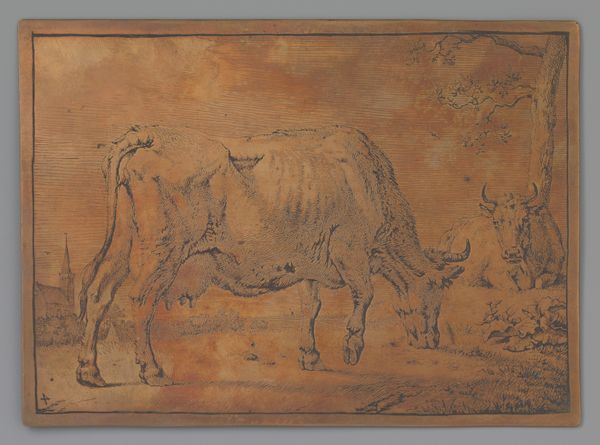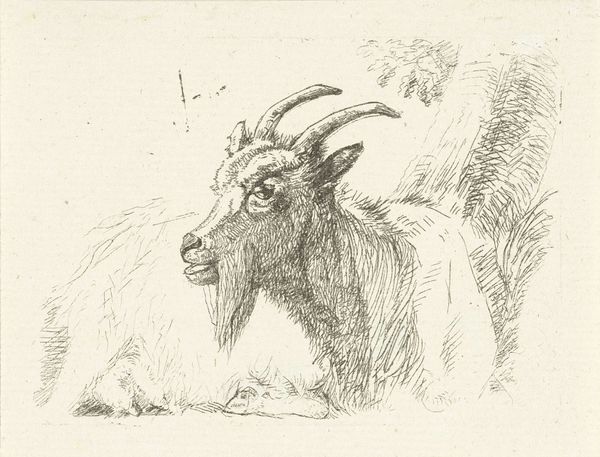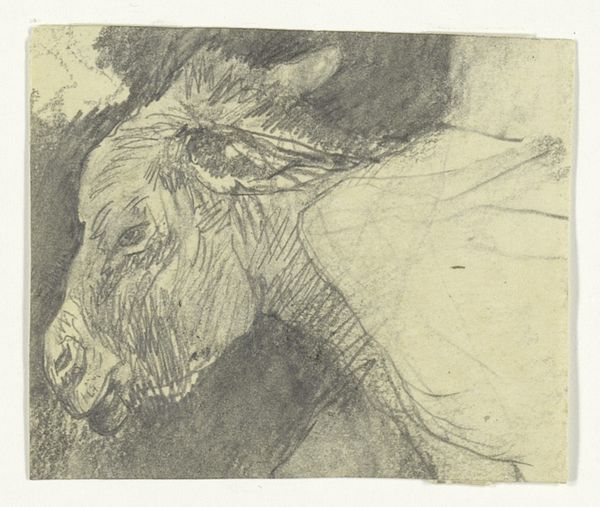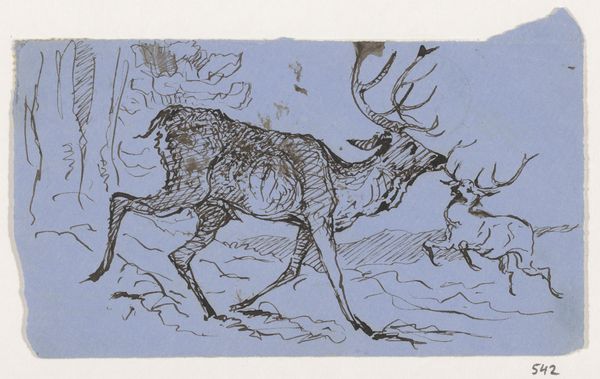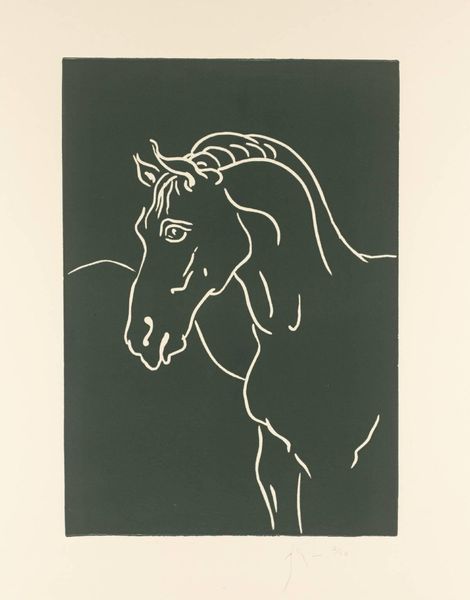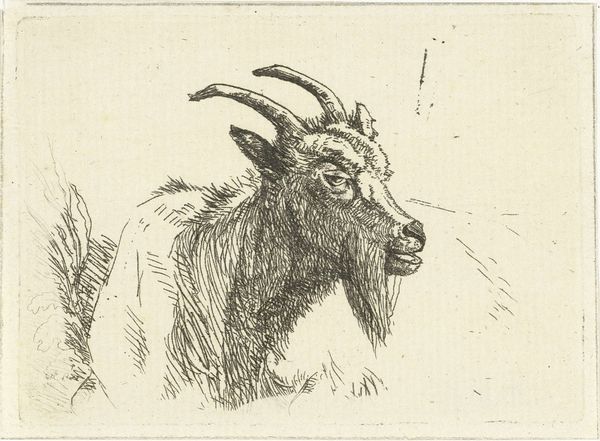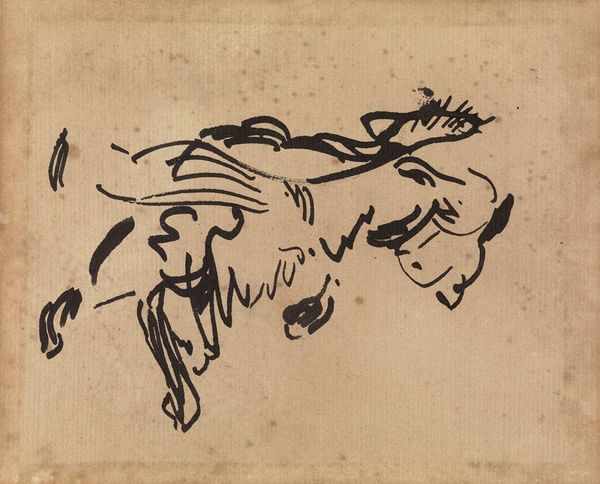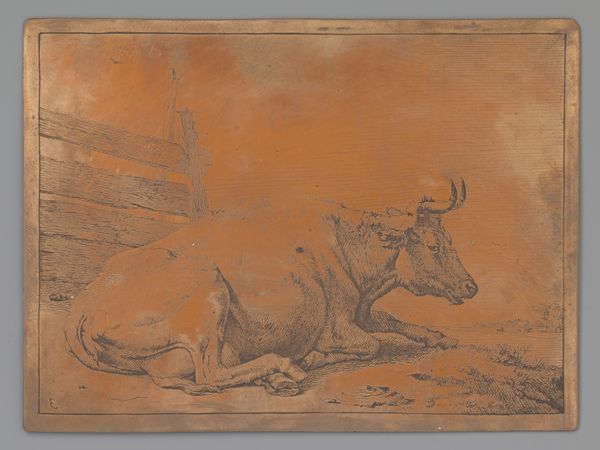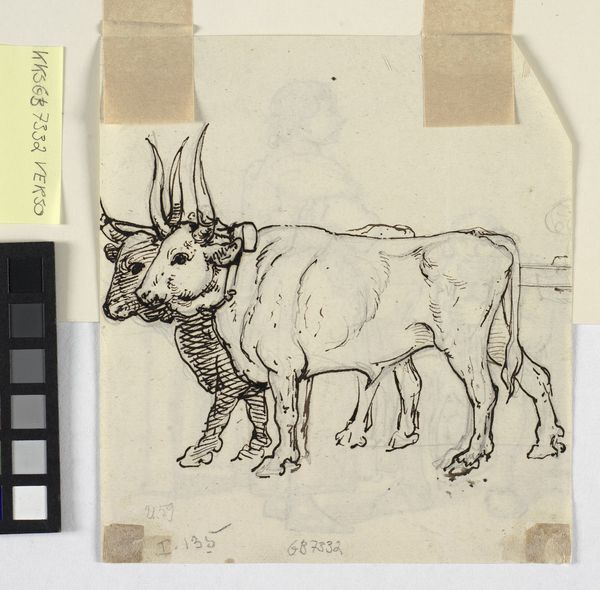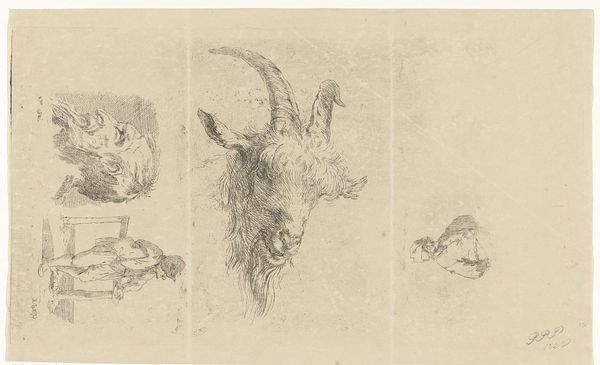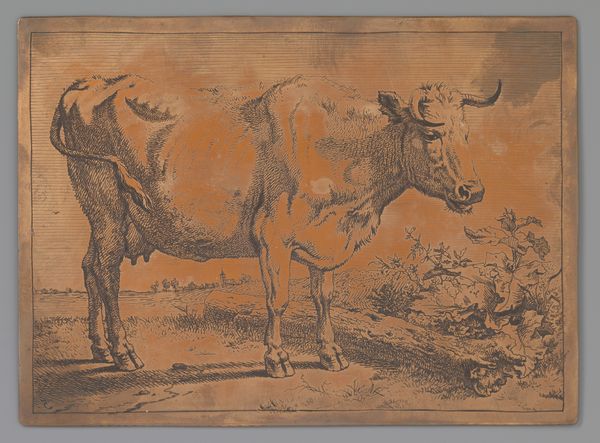
drawing, coloured-pencil, paper
#
portrait
#
drawing
#
coloured-pencil
#
baroque
#
paper
#
coloured pencil
Dimensions: height 650 mm, width 900 mm
Copyright: Rijks Museum: Open Domain
Curator: Here in the Rijksmuseum, we're looking at "Head of a Goat," a drawing in colored pencil on paper, believed to have been made sometime between 1650 and 1750 by an anonymous artist. Editor: There's something haunting about it, don't you think? The goat's gaze seems knowing, almost accusatory, and the way the colored pencil bleeds into the paper gives it a ghostly quality. It really prompts one to look deeper than its surface. Curator: Indeed, goats have held varied symbolic meanings across cultures and history. Often associated with virility, but also with stubbornness, lechery, or scapegoating. This ambiguous character has made goats figures of both reverence and derision. Here the image may draw on that duality, presenting the goat's head in stark, almost confrontational terms. Editor: That ambiguous position, suspended between positive and negative connotations, feels significant. In agricultural societies, the goat is sustenance, while in others they are considered demons. How are we implicated when observing this animal, and what inherent biases or projections are we bringing to this drawing? Is there some element of othering? Curator: Precisely. Think also of the "scapegoat," historically burdened with the sins of the community, expelled or sacrificed. This cultural association suggests the goat embodies unwanted attributes we project outwards. This could explain its compelling yet unsettling presence. Editor: Which makes you think about societal structures too, how we assign blame and create hierarchies, even within the animal kingdom. This Baroque portrait asks who we revere and who we discard. The very deliberate act of capturing its essence suggests a deeper interest in these assigned traits. It makes one ask: what parts of ourselves, what members of our societies do we turn into scapegoats? Curator: It invites a dialogue with ourselves, reflecting on our relationship with the natural world and with the complex symbolism it embodies. Editor: A quiet statement on cultural memory, revealing the layered meanings we impose on the world.
Comments
No comments
Be the first to comment and join the conversation on the ultimate creative platform.
